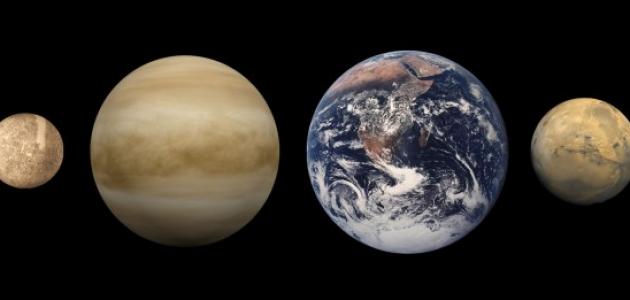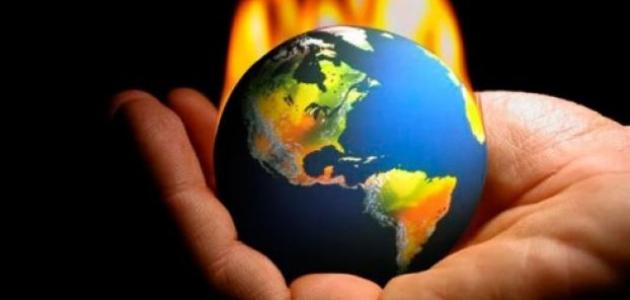Atmosphere
The atmosphere can be defined as the gases surrounding the star or the planetary body, which remain in their position by gravity, and its importance lies in protecting the earth from harmful ultraviolet radiation to living organisms, which causes sunburn, and in return it allows warm sunlight to pass through it, It keeps the Earth's temperature suitable for living and multiplying organisms.
atmospheric components
Earth's atmosphere consists of diatomic nitrogen (N2) by 78.08%, and diatomic oxygen (O2) by 20.95%, argon (A) by 0.93%, and water (H20) by approximately 0-4%, and carbon dioxide (CO2) by 0.04%, and inert gases such as: neon (Ne), helium (He), krypton (Kr) and other components such as nitrogen oxides, sulfur compounds, and ozone compounds in small quantities, and it also includes components other than natural gases such as dust and smoke, which increase Its proportion is close to cities.
Nitrogen gas
Nitrogen gas is the most abundant element in the Earth's atmosphere, and its sources include decomposing materials and human fertilizers added to the earth, and despite its abundance in the atmosphere, living organisms cannot use it in this state, so these organisms that need it get it in Synthesizing protein from other sources. In turn, some microbes can take it from the air and convert it into ammonia, making it available to plants and other organisms in a process called nitrogen fixation.
Read also:What are the effects of the expansion of the ozone hole?Nitrogen is an inert gas at normal temperatures and pressures; Because of the strong three bonds between the atoms that make up its molecule, which is a colorless, odorless, and tasteless gas, and one of the important elements in the chemistry of living organisms, it forms part of the amino acid, which is the basic structure for protein synthesis.
Oxygen gas
Oxygen gas is the second most abundant element in the atmosphere, and in the past, the Earth's atmosphere did not contain oxygen, but the microbes that produce their food by the process of photosynthesis produced oxygen as a by-product of this process, which led to an increase in its proportion in the atmosphere after that.
All living things need oxygen to survive, and it is produced through the process of photosynthesis by plants and other microbes, and plants also consume it in the process of respiration, and oxygen is also a highly flammable gas that helps ignite fires.
Carbon dioxide gas
Carbon dioxide is a colorless, non-flammable gas at normal temperature and pressure conditions, and the fourth most abundant component in the atmosphere, and scientists believe that its proportion has increased by about 40% in the atmosphere since the beginning of human industrial activities.
Volcanoes and forest fires are among the most important sources of carbon dioxide in the atmosphere, and the respiration process in living organisms releases carbon dioxide gas into the atmosphere, as well as results from the combustion process such as: combustion processes in internal combustion engines, and in return the construction process leads photosynthesis to remove it from the atmosphere.
Read also:The importance of water in lifeIt is worth noting that the concentration of carbon dioxide in the earth's atmosphere in the past contained much larger quantities of carbon dioxide, and it almost did not contain oxygen, and the increase in the organisms that carry out the process of photosynthesis led to an increase in the proportion of oxygen in it, which provided an opportunity for living organisms to live that depend on oxygen for respiration on Earth's surface.
Water vapor
The proportion of water vapor in the atmosphere depends on the temperature and density of the air; hot air can carry more water than cold air; Therefore, the percentage of water vapor rises in the hot tropical regions, and decreases in the polar and cold regions.
Water vapor enters the atmosphere by evaporation from water bodies after exposure to heat, and the percentage of water vapor in the atmosphere is expressed by measuring the humidity level, which rises when approaching seas and water bodies.
greenhouse gases
Greenhouse gases can be defined as any type of gas that has the ability to absorb infrared radiation emitted from the surface of the earth, to radiate it back to it, which leads to a greenhouse effect or global warming (in English: greenhouse effect), and methane, water vapor, Carbon dioxide is one of the most important of these gases, and ozone, nitrous oxides, and fluorinated gases are also among these gases.
Read also:What is amberGreenhouse gases significantly affect the energy budget of the Earth system, although they constitute only a small part of the gases in the atmosphere, and their concentrations have varied greatly during the history of the Earth, which has led to large climate changes on a large scale.
There are many factors that affect the concentrations of greenhouse gases, the most important of which are: human activities since the industrial revolution, especially the combustion of fossil fuels, which led to an increase in the concentration of many greenhouse gases such as: carbon dioxide, methane, ozone, and chlorofluorocarbons (CFCs).
atmospheric layers
The Earth's atmosphere has five main layers, and these layers are:
- troposphere: It is a layer that extends from the surface of the Earth to a height of approximately 12 km. It contains most of the clouds, planes, and air currents, and includes about 80% of the mass of the atmosphere.
- The stratosphere: It is the layer that follows the troposphere, and extends from a height of approximately 12-50 or 55 km above the surface of the earth, and includes nacreous clouds, the ozone layer, and a few planes, and the temperature increases with altitude; Because of the absorption of ultraviolet radiation by the ozone layer.
- The mesosphere: It extends from the end of the stratosphere to a height of approximately 85 kilometers, and temperatures begin to drop again.
- The thermosphere: It extends from the end of the mesosphere to approximately 499-998 km above the Earth's surface; As its size depends on the activity of the sun, and the temperatures rise again, and it includes the aurora (in English: auroras), which can be seen from the north and south poles of the Earth.
- Exosphere (in English: exosphere): It is the highest layer of the atmosphere, extending to about 10,000 km above the Earth's surface, and contains a few particles that are weakly bound to the Earth.









